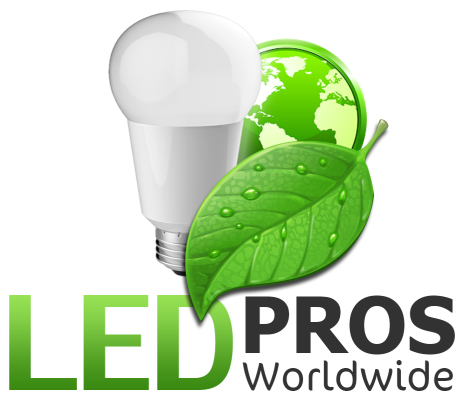In industries where flammable gases, vapors, or liquids are present, ensuring the safety of workers and facilities is of utmost importance. One critical aspect of maintaining a secure environment is the use of explosion-proof lighting. But what exactly is the explosion proof lighting standard, and why is it so crucial? In this article, we’ll delve into the details of this essential safety standard and explore its significance in hazardous locations.
What is the Explosion-Proof Lighting Standard?
The explosion proof lighting standard is a set of guidelines and requirements that govern the design, construction, and installation of lighting fixtures in hazardous environments. These standards are put in place to prevent electrical sparks or heat from igniting flammable substances, which could lead to catastrophic explosions. The main objective of the explosion-proof lighting standard is to ensure that lighting equipment can withstand the harsh conditions found in these high-risk areas.
Key Aspects of Explosion Proof LED Lights
When it comes to explosion proof lighting, LED technology has emerged as a popular choice due to its energy efficiency, longevity, and durability. Here are some key aspects of explosion proof LED lights:
- Robust Construction: Explosion proof LED lights are built with rugged, corrosion-resistant materials like aluminum or stainless steel. These materials can withstand the extreme conditions found in hazardous locations.
- Sealed Enclosures: The electrical components of explosion proof LED lights are housed in sealed enclosures, preventing flammable gases or vapors from entering the fixture and potentially causing an explosion.
- Temperature Management: Explosion proof LED lights are designed to manage heat effectively, ensuring that the surface temperature of the fixture remains below the ignition point of the surrounding hazardous substances. Read more about Identifying Explosion Proof Lighting for Ultimate Safety here.
Applications of Explosion Proof Lighting
Explosion proof lighting finds applications in a wide range of industries where flammable materials are present. Some common areas where these lights are used include:
– Oil and gas refineries
– Chemical processing plants
– Petrochemical facilities
– Mining operations
– Paint and coating manufacturing
– Grain handling and storage facilities
In these environments, explosion proof lighting provides a safe and reliable illumination solution, minimizing the risk of explosions and ensuring the well-being of personnel and equipment.
Exploring the Explosion-Proof Lighting Standard
The explosion proof lighting standard encompasses various regulations and certifications aimed at ensuring the safety and reliability of lighting fixtures in hazardous locations. These standards typically involve rigorous testing procedures to assess a luminaire’s ability to withstand potential explosions.
 |
Common Certifications
-UL Classifications: Underwriters Laboratories (UL) offers classifications such as Class I, Division 1 and Class I, Division 2 for hazardous locations based on the presence and concentration of flammable substances.
– ATEX Directive: Widely adopted in Europe, the ATEX Directive sets forth standards for equipment intended for use in explosive atmospheres.
– IECEx Certification: The International Electrotechnical Commission (IEC) provides certification for explosion-proof equipment, ensuring compliance with international standards.
Frequently Asked Questions (FAQs)
- What is the difference between explosion proof and intrinsically safe lighting?
– Explosion proof lighting is designed to contain an explosion within the fixture, preventing it from spreading to the surrounding environment. Intrinsically safe lighting, on the other hand, operates at such low energy levels that it cannot cause an explosion, even in the presence of flammable substances.
- How often should explosion proof lighting be inspected and maintained?
– Explosion proof lighting should be regularly inspected and maintained according to the manufacturer’s guidelines and industry standards. This typically involves checking for any damage, corrosion, or loose connections and cleaning the fixtures to ensure optimal performance.
- Can explosion proof lighting be used in outdoor environments?
– Yes, explosion proof lighting can be used in both indoor and outdoor hazardous locations. However, it’s essential to choose fixtures that are rated for specific environmental conditions, such as temperature range, humidity, and corrosion resistance.
4. Are all LED lights suitable for hazardous locations?
– No, not all LED lights are designed for use in hazardous locations. It’s essential to choose fixtures specifically rated as explosion-proof for such environments to ensure safety and compliance with regulations.
5. How do I determine the appropriate lighting fixture for a specific hazardous location?
– Assessing factors such as the type and concentration of flammable substances, temperature range, and environmental conditions is crucial in selecting the right explosionproof lighting fixture. Consulting with a knowledgeable lighting specialist can help identify the most suitable options.
Final Words
The explosion proof lighting standard plays a vital role in ensuring the safety of workers and facilities in hazardous environments where flammable substances are present. By adhering to these stringent guidelines and utilizing explosion proof LED lights, industries can mitigate the risk of explosions and maintain a secure working environment. As technology advances, explosion-proof lighting solutions continue to evolve, offering improved energy efficiency, durability, and performance. By staying informed about the latest developments in explosion-proof lighting standards, industries can remain at the forefront of safety and compliance. Read more about Navigating the Bright Side of Hazardous Areas: The Essential Guide to Explosion-Proof Lighting Fixtures here.
In hazardous environments where the risk of explosions looms large, investing in explosion-proof lighting is a non-negotiable aspect of ensuring safety and compliance. By adhering to stringent standards and certifications, such as those outlined in this guide, organizations can effectively mitigate risks and protect both personnel and assets. With the advancement of LED technology, explosion proof LED lights offer a reliable, energy-efficient lighting solution tailored to the demands of hazardous locations. Prioritizing safety through proper illumination is not just a regulatory requirement but a fundamental obligation toward creating a secure work environment.
